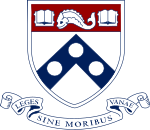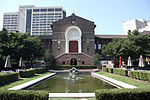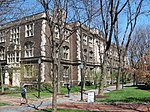University of Pennsylvania College of Arts & Sciences
The University of Pennsylvania College of Arts & Sciences (CAS) is the oldest undergraduate college at the University of Pennsylvania, a private Ivy League university, situated on the university's main campus in University City, Philadelphia. The college traces its roots to the establishment of a secondary school known as Unnamed Charity School in 1740. In 1749, Benjamin Franklin and twenty-one leading citizens of Philadelphia officially founded a secondary school named Academy of Philadelphia. In 1755, the secondary school was expanded to include a collegiate division known as College of Philadelphia. The secondary and collegiate institutions were known collectively as The Academy and College of Philadelphia. The college received its charter from Thomas Penn and Richard Penn. Penn CAS is the oldest institution of higher learning in the state of Pennsylvania and the sixth-oldest chartered college in the United States. Penn is distinctive for its comprehensive "One University Policy," which allows students to enroll in classes in any of Penn's twelve schools, including the law school and the Wharton School. The college is the 13th most selective undergraduate school in the United States and 6th most selective in the Ivy League having accepted only 8.39% of its applicants for the Class of 2022.
Excerpt from the Wikipedia article University of Pennsylvania College of Arts & Sciences (License: CC BY-SA 3.0, Authors).University of Pennsylvania College of Arts & Sciences
South Street, Philadelphia
Geographical coordinates (GPS) Address Nearby Places Show on map
Geographical coordinates (GPS)
| Latitude | Longitude |
|---|---|
| N 39.95 ° | E -75.19 ° |
Address
Franklin Field
South Street
19104 Philadelphia
Pennsylvania, United States
Open on Google Maps








